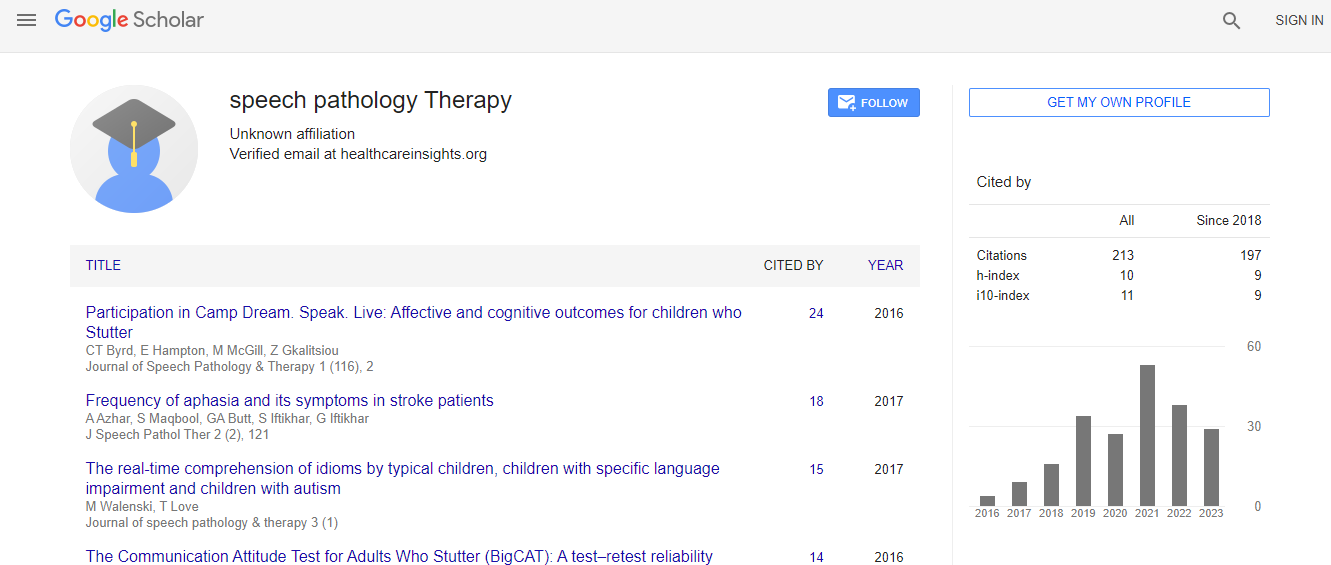The German Communication Attitude Test for Preschool and Kindergarten Children Who Stutter (KiddyCAT-G): Reliability and First Reference Data
*Corresponding Author: Sandra Neumann, Department of Pedagogics and Therapy in Speech-Language Disorders, Faculty of Human Sciences, University of Cologne, Germany, Tel: 0049-221-470550, Email: sandra.neumann@uni-koeln.deReceived Date: Dec 10, 2018 / Accepted Date: Dec 26, 2018 / Published Date: Jan 02, 2019
Citation: Neumann S, Vanryckeghem M, Tiefenthaller R, Rietz C, Stenneken P (2019) The German Communication Attitude Test for Preschool and Kindergarten Children Who Stutter (KiddyCAT-G): Reliability and First Reference Data. J Speech Pathol Ther 3: 138
Copyright: © 2019 Neumann S, et al. This is an open-access article distributed under the terms of the Creative Commons Attribution License, which permits unrestricted use, distribution, and reproduction in any medium, provided the original author and source are credited.
Abstract
Objective: To investigate reliability and describe reference data of the KiddyCAT-G, an authorized German adaptation of the ‘Communication Attitude Test for preschool and kindergarten children who stutter.
Method: Children (3.0-5.11 yrs) who do not stutter (CWNS; n=150) and children who stutter (CWS; n=30) completed the KiddyCAT-G. In order to determine test-retest reliability, the KiddyCAT-G was re-administered to a sub-sample of children (n=35; CWNS: n=15, CWS: n=20) one week later. Their parents completed a sociodemographic questionnaire.
Results: The KiddyCAT-G had moderate to high values of internal consistency for both groups (CWNS: α=0.61; CWS: α=0.79), as well as high test-retest-reliability (r=0.983, p<0.001). Group comparisons showed significantly higher mean scores for CWS (M=3.73, SD=2.92) than for CWNS (M=1.47, SD=1.65). In both groups, younger children (3.0–4.6 yrs) scored descriptively higher than older ones, a difference that was non-significant for the CWS, but significant for CWNS.
Conclusion: The internal consistency and test-retest-reliability of this assessment tool of communication attitude supports its use by SLPs for clinical and research purposes in German-speaking children. Data of 150 CWNS give first reference values.
 Spanish
Spanish  Chinese
Chinese  Russian
Russian  German
German  French
French  Japanese
Japanese  Portuguese
Portuguese  Hindi
Hindi 